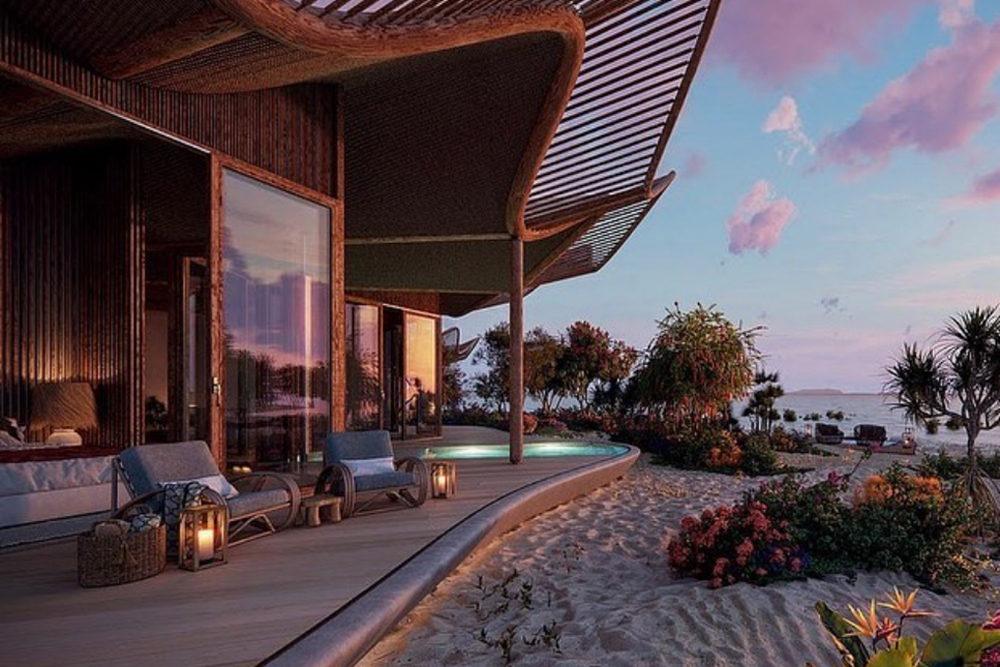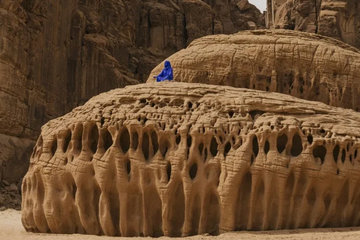
Before the pandemic, the tourism industry was growing steadily in Saudi Arabia. Hopes that things will get back on track are buoyed with developments like The Red Sea Project, situated on the west coast. The beautiful sanctuary with jaw-dropping beaches, blankets of desert dunes, dormant volcanoes, canyons, mountain ranges and the world's fourth-largest barrier reef system is set to be a magnet for outdoor enthusiasts. More specifically, outdoor enthusiasts who happen to be luxury travellers, as the multi-island resort slated to be fully open in 2030 promises to offer decadent, impeccably customised experiences. It will also attract the new generation of conscientious travellers, which is looking for quality experiences as they immerse themselves in nature’s local marvels.
What really sets the archipelago of over 90 pristine islands apart though is that it is the world’s most ambitious regenerative tourism project. The Red Sea Project, developed by the Red Sea Development Company (TRSDC), is on track to be the world's largest destination driven exclusively by renewable energy, generated from solar panels and wind turbines. The project that secured the first-ever Riyal-denominated Green Finance credit facility will house the world's largest battery storage facility. Additionally, eco-friendly practices are being considered during construction methods, including ways to reduce waste and interference to the delicate ecostystems. Materials like green concrete, made with fewer resources, will be largely used while other conservation endeavours range from looking into 3D-printed coral technologies and carbon-impounding marine algae farms to mechanical trees.
“We are acutely aware of our responsibility to protect this pristine environment and adopted stringent measures from the very beginning," John Pagano, CEO of TRSDC, said. "Careful selection of areas for development is one of the key ways in which we will achieve this. We're leaving 75 percent of our island archipelago untouched and designating nine islands as special conversation zones."
As well as developing only one percent of the 17,400-square-mile expanse, the CEO has revealed they hope to achieve a 30 per cent net conservation benefit by 2040, showing the company wants to not only preserve the environment, but enhance it as well. Plus, part of the plan to boost sustainable hospitality will be limiting the number of visitors to one million each year.
The Coral Bloom
When fully completed in 2030, The Red Sea Project will boast 50 hotels (8,000 rooms), 1,300 residential properties, six inland sites and amenities like luxury marinas, golf courses and leisure facilities, across 22 islands. And phase one of the venture, which includes 16 hotels in total, is due to be finished by 2023.
Coral Bloom designs take inspiration from flora and fauna found uniquely in Saudi Arabia.https://t.co/1aQHH3HTYB
— About Her (@AboutHerOFCL) February 20, 2021
Coral Bloom, on the main hub island of Shurayrah, is part of this initial phase. The futuristic development, being designed by renowned British architects Foster + Partners, will encompass 11 hotels that should begin welcoming guests in late 2022. While each hotel is geared to offer different experiences, their guests will all get the opportunity to be immersed in an unparalleled barefoot luxury experience.
Set on the naturally dolphin-shaped gateway island, Coral Bloom takes inspiration from Saudi Arabia’s indigenous flora and fauna. And the ground-breaking architecture and sustainable designs are being made to blend in with the island’s pristine natural environment.

















